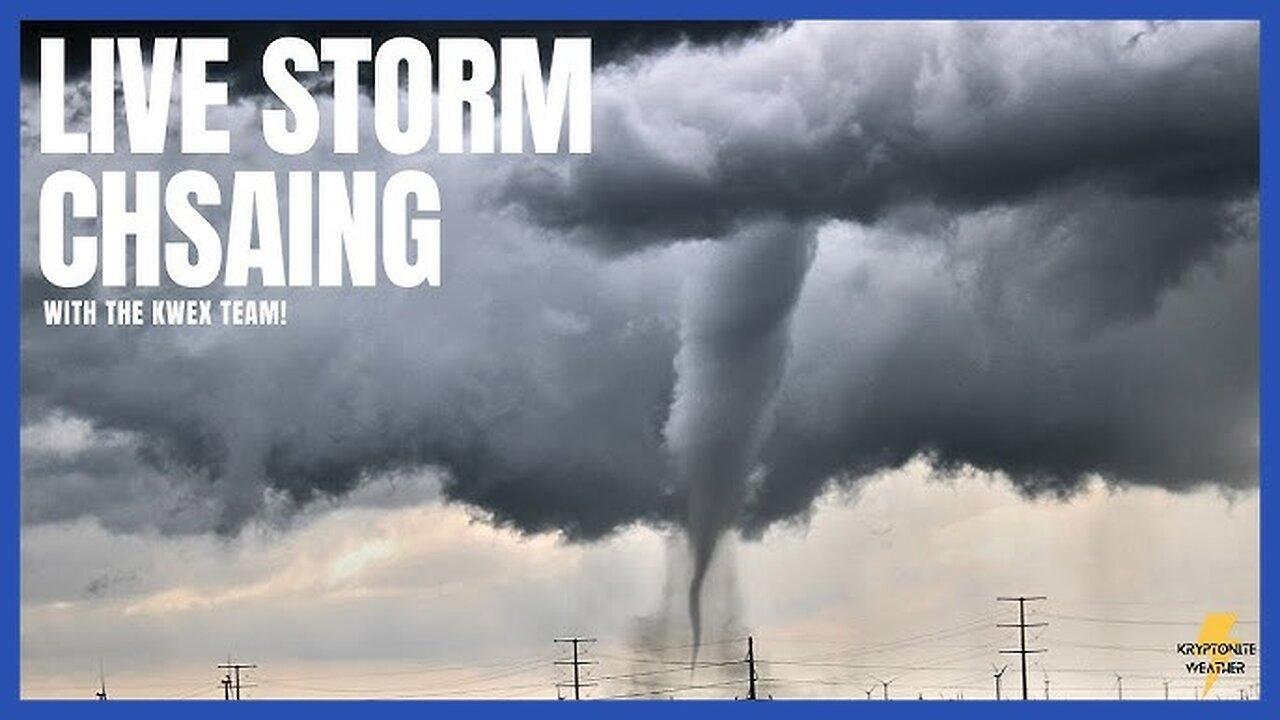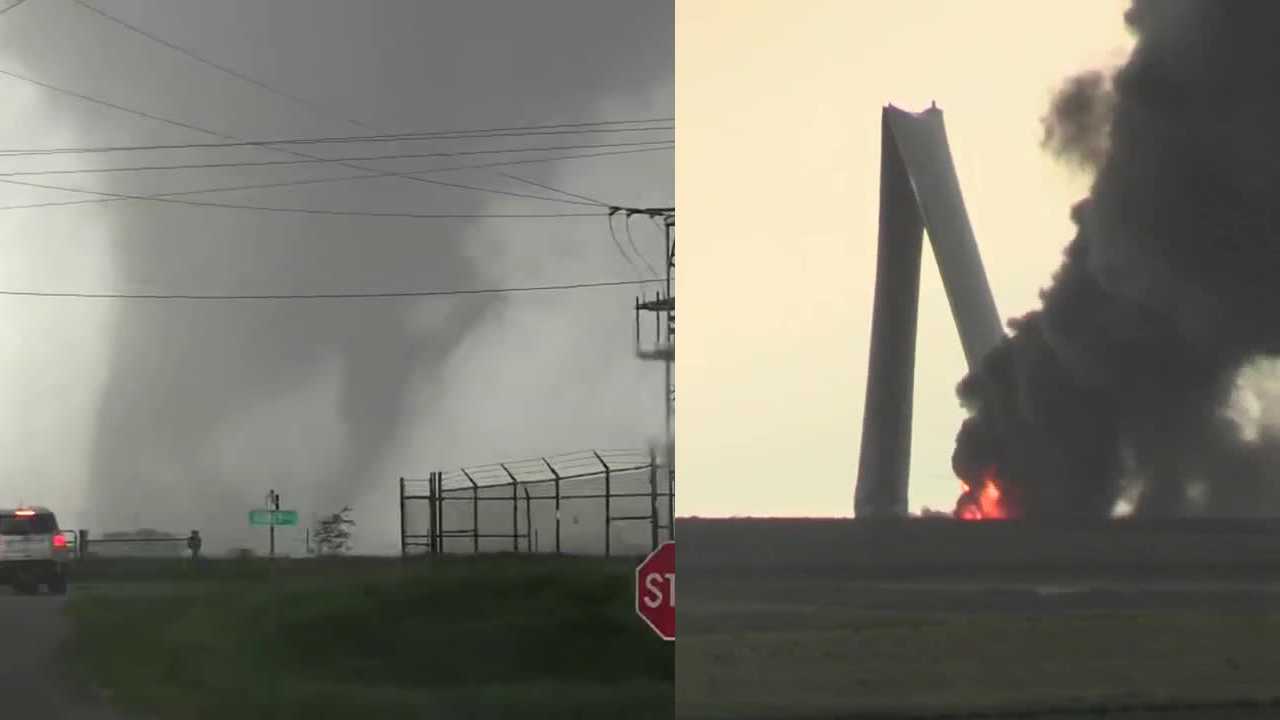Historical Overview of Tornadoes in Iowa

Tornado in iowa – Iowa has a long and well-documented history of tornadoes, with some of the most significant and destructive events occurring in the past century. The state’s geographic location in the center of the Great Plains, often referred to as “Tornado Alley,” makes it particularly vulnerable to these powerful storms.
Iowa is a tornado-prone state, with the Greenfield tornado being one of the most devastating in recent history. The tornado, which occurred in 2018, caused widespread damage and left a lasting impact on the community. The greenfield tornado is a reminder of the importance of tornado preparedness and the resilience of the human spirit.
Tornadoes can strike anywhere, and it is essential to be aware of the risks and know what to do if a tornado warning is issued.
The frequency and severity of tornadoes in Iowa vary from year to year, but the state consistently ranks among the top five in the United States for tornado occurrences. According to the National Oceanic and Atmospheric Administration (NOAA), Iowa has experienced an average of 52 tornadoes per year since 1950, with some years seeing as many as 100 tornadoes.
Significant Tornadoes in Iowa’s History
Some of the most notable tornadoes to have struck Iowa include:
- The Grinnell Tornado of June 18, 1968: An F5 tornado that killed 5 people and injured 150 in the town of Grinnell.
- The Des Moines Tornado of July 4, 1968: An F4 tornado that killed 3 people and injured 60 in the city of Des Moines.
- The Parkersburg Tornado of May 25, 2008: An EF5 tornado that killed 9 people and injured 50 in the town of Parkersburg.
- The Dexter Tornado of June 13, 2010: An EF4 tornado that killed 2 people and injured 20 in the town of Dexter.
Geographic Distribution and Patterns
Tornadoes in Iowa are not evenly distributed across the state. Certain areas are more prone to tornadoes than others due to a combination of factors, including terrain, weather patterns, and climate conditions.
Tornado Alley
Iowa is located within the central United States region known as Tornado Alley, which experiences a high frequency of tornadoes. The terrain in Tornado Alley is relatively flat, with few obstacles to impede the formation and movement of tornadoes. Additionally, the region is often affected by severe weather systems, such as thunderstorms and squall lines, which can produce tornadoes.
Seasonal and Monthly Distribution
Tornadoes can occur in Iowa at any time of the year, but they are most common during the spring and summer months. The peak tornado season in Iowa typically runs from April to June. During these months, the state experiences a combination of warm, humid air from the Gulf of Mexico and cold, dry air from the north. This clash of air masses creates the unstable atmospheric conditions that are favorable for tornado formation.
Tornado Climatology and Forecasting
Tornadoes in Iowa are influenced by specific meteorological conditions that create a favorable environment for their development. Understanding these conditions and utilizing weather forecasting and early warning systems are crucial for mitigating the impacts of these destructive weather events.
As the devastating tornado tore through Iowa, leaving a trail of destruction in its wake, the town of Greenfield emerged as one of the hardest-hit areas. For a comprehensive view of the damage and to aid in relief efforts, refer to this detailed greenfield ia map . As recovery efforts continue, this map provides a crucial resource for understanding the scope of the tornado’s impact and coordinating assistance.
The formation of tornadoes in Iowa is primarily driven by the interaction between warm, moist air from the Gulf of Mexico and cold, dry air from the north. These contrasting air masses create instability and updrafts that can lead to the formation of thunderstorms. When these updrafts become sufficiently strong, they can cause the development of rotating updrafts known as mesocyclones. Under the right conditions, these mesocyclones can spawn tornadoes.
Amidst the relentless onslaught of tornadoes tearing through Iowa, one can find solace in the detailed maps that guide us through the storm. The Greenfield Iowa map stands out as a beacon of clarity, providing a lifeline to those seeking safety.
As the tornadoes rage, we turn to these maps for guidance, hoping to outmaneuver the destructive forces that threaten our communities.
Role of Weather Forecasting and Early Warning Systems
Weather forecasting and early warning systems play a vital role in mitigating the impacts of tornadoes. Meteorologists use a variety of tools and technologies to monitor weather conditions and predict the likelihood of tornado formation. Doppler radar, satellite imagery, and numerical weather prediction models are used to track storm systems and identify areas at risk for tornadoes.
When a tornado warning is issued, it is essential for residents to take immediate action to seek shelter. Early warning systems, such as sirens and mobile phone alerts, provide crucial information and lead time for people to prepare and take protective measures.
The recent tornado in Iowa has left a trail of destruction in its wake. Greenfield, a small town in the state, was particularly hard hit, with homes and businesses reduced to rubble. For more information on the damage caused by the tornado in Greenfield, please visit greenfield iowa tornado damage . The tornado’s destructive path extended across the state, leaving behind a reminder of the power of nature.
Accuracy and Effectiveness of Tornado Forecasting Methods
Tornado forecasting methods have improved significantly in recent years, but predicting the exact timing and location of tornadoes remains a challenge. While Doppler radar can detect rotating updrafts and provide valuable information, it is not always possible to determine whether a tornado will form. Additionally, tornadoes can develop rapidly and move quickly, making it difficult to provide sufficient warning time.
Despite these challenges, tornado forecasting methods have saved countless lives. By providing early warnings and information, meteorologists and emergency responders can help communities prepare and reduce the risk of injuries and fatalities.
Tornadoes, violent storms that can cause widespread damage, are a common occurrence in Iowa. For the latest updates on the tornadoes in Iowa today, visit tornado in iowa today . This website provides real-time information on the location, severity, and potential impact of tornadoes in Iowa, helping you stay informed and prepared during these dangerous weather events.
Impacts of Tornadoes on Iowa

Tornadoes have a significant impact on the state of Iowa, causing widespread damage and loss. The economic and social consequences of these events can be devastating, affecting infrastructure, property, agriculture, and human lives.
Economic Impacts
- Damage to Infrastructure: Tornadoes can cause severe damage to roads, bridges, power lines, and other essential infrastructure. This can disrupt transportation, communication, and access to basic services, leading to economic losses.
- Property Damage: Homes, businesses, and other buildings are often destroyed or severely damaged by tornadoes. This can result in significant financial losses for individuals and businesses.
- Agricultural Losses: Tornadoes can devastate crops, livestock, and farm infrastructure. This can have a major impact on the agricultural industry, which is a vital part of Iowa’s economy.
Social Impacts
- Injuries and Fatalities: Tornadoes can cause serious injuries or even death. The sudden and violent nature of these events can lead to a high number of casualties.
- Psychological Trauma: Survivors of tornadoes often experience psychological trauma, including anxiety, depression, and post-traumatic stress disorder. This can have a lasting impact on their mental health and well-being.
- Displacement and Disruption: Tornadoes can force people to evacuate their homes and disrupt their lives. This can lead to temporary or permanent displacement, as well as financial and emotional hardship.
Long-Term Recovery and Resilience
Recovering from a major tornado event is a complex and long-term process. It requires coordination between government agencies, emergency responders, and community organizations. The focus is on restoring essential services, providing shelter and support to survivors, and rebuilding damaged infrastructure.
Resilience is key to mitigating the impacts of tornadoes. Communities can implement measures such as tornado warning systems, building codes that require tornado-resistant construction, and public education campaigns to prepare residents for these events.
Tornado Safety and Preparedness

As a result of Iowa’s vulnerability to tornadoes, it is imperative to emphasize the paramount importance of tornado safety and preparedness. By adhering to specific measures, individuals, families, and communities can mitigate the risks associated with these formidable weather events.
One crucial aspect of tornado preparedness is the formulation of a comprehensive tornado preparedness plan. This plan should Artikel the specific actions to be taken before, during, and after a tornado event. It should include designated safe havens within the home or workplace, as well as evacuation routes and procedures. Regular practice of tornado drills is essential to ensure that everyone knows what to do in the event of an actual tornado.
Public Education and Outreach Programs
Public education and outreach programs play a pivotal role in promoting tornado awareness and safety. By disseminating information about tornado risks, safety measures, and preparedness plans, these programs empower individuals and communities to take proactive steps to protect themselves. Effective programs often utilize a variety of communication channels, including social media, public service announcements, and community workshops, to reach a broad audience.
Evaluating the effectiveness of public education and outreach programs is crucial to ensure that they are achieving their intended goals. This can be done through surveys, focus groups, and other methods to assess changes in knowledge, attitudes, and behaviors related to tornado safety.
Individual Preparedness Measures
- Identify a safe place in your home or workplace, such as a basement, storm cellar, or interior room on the lowest floor.
- Keep a battery-powered radio and flashlight handy.
- Have a first-aid kit and essential medications on hand.
- Stay informed about weather forecasts and warnings.
- Be prepared to evacuate if necessary.
Community Preparedness Measures
- Develop a community tornado preparedness plan.
- Conduct regular tornado drills.
- Educate the public about tornado safety.
- Provide resources for tornado victims.
By implementing these safety and preparedness measures, individuals, families, and communities can significantly reduce their vulnerability to tornadoes and mitigate the potential consequences of these devastating weather events.
Climate Change and Future Tornado Risks: Tornado In Iowa
Climate change is expected to have a significant impact on tornado activity in Iowa. Rising temperatures, changes in precipitation patterns, and alterations in atmospheric circulation could all contribute to an increase in the frequency and severity of tornadoes in the state.
One of the most significant impacts of climate change on tornadoes is the increase in atmospheric instability. As temperatures rise, the atmosphere becomes more unstable, providing more energy for the development of tornadoes. Additionally, changes in precipitation patterns could lead to more frequent and intense thunderstorms, which are the primary breeding ground for tornadoes.
Changes in Temperature
- Rising temperatures increase atmospheric instability, providing more energy for tornado development.
- Warmer temperatures lead to more frequent and intense thunderstorms, which are the primary breeding ground for tornadoes.
Changes in Precipitation Patterns
- More frequent and intense thunderstorms provide more opportunities for tornado development.
- Changes in precipitation patterns could lead to an increase in the number of days with favorable conditions for tornadoes.
Changes in Atmospheric Circulation, Tornado in iowa
- Alterations in atmospheric circulation could lead to changes in the frequency and severity of tornadoes.
- Changes in wind patterns could affect the formation and movement of tornadoes.